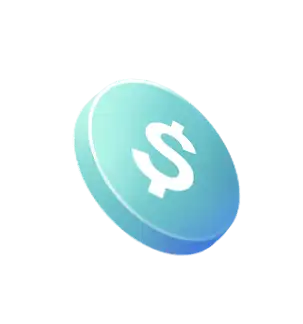Personal Finance
•
5 mins read
•
October 21, 2020
A Beginner's Guide to Generating Passive Income
A quick-fire explainer on passive income and how you too can start creating it

In a country where
, it makes sense that everyone wants to earn more money. But time is also an important factor. If you work 40 hours a week, finding time to earn more money isn’t always feasible.
What if you were told that there’s another way? Say hello to passive income. It’s a way to create income where you invest some time upfront but can then generate returns over longer periods of time without putting in extra hours of work. It lets people make money without being physically present, decoupling your time from your income.
But there are many different types of passive income, and some use the term to refer to multi-level marketing enterprises or pyramid schemes, which are an obvious no-no. Read on to see how passive income actually works and why it’s a real way to make money.
What is Passive Income?
Active income refers to a traditional job where you show up, do work and get paid. Passive income means creating a system with some initial set-up work that then brings in money with much less effort.
Working as a property manager at an apartment counts as active income while being a landlord is an example of passive income. Passive income doesn’t mean not working at all. It just means putting in a few hours for a high hourly rate.
A side hustle like driving for Lyft or delivering food for Postmates is also an example of active income because you only get paid when you work. However, a side hustle like selling digital wedding invitations that people customize themselves is an example of passive income.
How Do I Generate Passive Income: Explaining the Different Passive Income Streams
Put Your Money in a High Yield Account
Earning interest on your deposit by placing it in a
is the simplest way to create passive income. A high yield checking account is a cash account that pays interest —think of it like a savings account but without all the spending and withdrawal restrictions.
In today’s day and age, if you’re still stuck with your national bank that offers a zero-interest checking account, you’re leaving money on the table! You can earn almost 20x more using digital banking platforms like OnJuno without any hidden fees or charges.
And
to other interest bearing instruments like CDs, high yield checking accounts are just easier to deal with on a day-to-day basis. You can deposit and withdraw money freely without worrying about lock-in periods and exit fines.
Invest in Real Estate
Being a landlord is one of the oldest examples of passive income. To accomplish this, you have to
, either by buying a property or renting out a spare room in your own home.
Every month, you’ll collect rent, but you’ll also deal with any maintenance problems. Becoming a landlord also comes with many upfront expenses, especially if you’re buying another property. Down payments on investment properties are usually 20% or more, compared to 5% for residential homes.
Real estate is also very illiquid which means it’s hard to get your money out. If you lose your job, you’d have to sell the property to recoup your funds.
Earn Dividend Income
When you buy a stock, sometimes it pays a dividend. A dividend is a portion of the company’s profits that is redistributed to the stockholder.
Not every stock pays a dividend, so you’ll have to do research to find which stocks consistently pay dividends. You’ll also have to pay taxes on the dividends. You also generally need to have a substantial amount of shares to generate a large source of income.
Peer-to-Peer Lending
Peer-to-peer lending involves lending a sum of money to a stranger and then receiving payments from them. Peer-to-peer lending is like being an individual lender. Plus, most of the time you’re supporting people in developing countries.
A risk with this type of passive income stream is if the borrower defaults, and you lose your money. There’s no guarantee they’ll pay, and unlike a business, you can’t hire a debt collector to go after them.
Build a Fan Base through Blogging or Social Media
Blogging has been touted as a passive income stream that anyone can start. You just need to buy a domain, choose a topic and start writing.
Bloggers make money by displaying ads on their site, writing about specific companies or by promoting products that pay a referral fee. For example, a beauty blogger who recommends a makeup brush may earn a portion of the proceeds.
Social media influencers do the same thing except they focus on a specific social media platform like Instagram or TikTok.
Use Cashback Cards Wherever You Can
Imagine getting paid whenever you buy everyday items. That’s exactly what cashback cards can do for you. While not strictly considered a passive income source, we would definitely classify it as so since you’re not putting any additional time or effort in generating additional income.
Sell Digital Products
Selling physical products can make you money but they require operational time to make, package and ship. Digital products don’t need any of these — you can just create it once and sell it over the internet countless times, generating passive income.
Digital products are items you create and list for sale where an unlimited amount of people can buy them. Pat Flynn, host of the
, got his start by creating a study guide for architects trying to pass the LEED exam. He listed the book for sale for $19.99 and sold 350 copies in his first month.
Think of a product that you could create and sell for months or even years to come. This might be a meal planning calendar or a digital poster they can print. Use your expertise and knowledge to create the product.
How to Create Multiple Streams of Income
If you want to create several streams of passive income, you first need to examine your finances as a whole. If you have high-interest debt, focus on [paying that off](https://onjuno.com/blog/taking-a-short-term-loan-to-pay-off-high-interest-debt) first before investing money in passive income.
Next, examine how much extra money you have to put toward your new venture. People with limited funds should consider something low-effort like dividends. If you have more disposable income, you can consider buying an investment property.
What are the Downsides to Passive Income?
Passive income is never truly just passive. You still have to monitor the source of income, track expenses and plan ahead. The time commitment can also vary.
For example, if you’re a landlord, your busy times will usually be when a new tenant is moving in or when there’s a major repair. It may be difficult to plan ahead for these emergencies. If your tenant’s fridge breaks when you’re about to leave on vacation, you may have to pay extra to find a replacement fridge before your trip.
During a normal time period, being a landlord may only take a few hours a month. This still counts as passive income because it doesn’t require a full-time commitment.
Can You Live off Passive Income?
Another downside to passive income is that it is never as reliable as a 9-to-5 job. If you rely on a particular passive income stream for your monthly expenses, you may find yourself in dire straits when something changes. When the Covid-19 pandemic hit, many landlords suddenly found themselves with tenants who couldn’t pay their rent. Imagine in that situation having to scrounge money to afford mortgage payments, or worse, defaulting on that loan.
If you’re interested in jumping into passive earnings as an income strategy, it’s best to follow the sage financial advice of hedging your bets. Maintain an active source of income and diversify your passive income sources aggressively so that you’re never solely dependent on only one of them.
Some offers which were available at the time of writing this blog may or may not be currently valid


